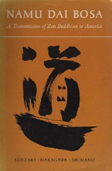The Shimano Archive
|
Eido Roku™ - 栄道錄 | |||
| The sayings and doings of Eido Shimano – 島野栄道の言葉と行動 | ||||
| The "What's New?" Page: Latest Additions | 日本語はここをクリックしてください: |  |
| Deutsch, bitte klicken Sie hier:_ |  |
| ENTRIES: 1,044 | DOCUMENTS: 1,033 | PAGES: 7,345 | VIDEOS: 16 | AUDIOS: 13 | HTMLs: 9 |
| Page 1 | Page 2 | Page 3 | Page 4 | Page 5 | Page 6 | Page 7 | Page 8 | Page 9 | Page 10 |
| 1 - 50 | 51 - 100 | 101 - 150 | 151 - 200 | 201 - 250 | 251 - 300 | 301 - 350 | 351 - 400 | 401 - 450 | 451 - 500 |
| 1958-1964 | 1964-1964 | 1964-1965 | 1965-1965 | 1965-1978 | 1978-1982 | 1982-1983 | 1983-1986 | 1986-1993 | 1993-1995 |
| Page 11 | Page 12 | Page 13 | Page 14 | Page 15 | Page 16 | Page 17 | Page 18 | Page 19 | Page 20 |
| 501 - 550 | 551 - 600 | 601 - 650 | 651 - 700 | 701 - 750 | 751 - 800 | 801 - 850 | 851 - 900 | 901 - 950 | 951 - 1000 |
| 1995-2003 | 2003-2010 | 2010-2010 | 2010-2011 | 2011-2011 | 2011-2011 | 2011-2011 | 2011-2012 | 2012-2013 | 2013-2014 |
| Page 21 | ||
| 1001 - 1050 | ||
| 2014-2015 |
 |
 |
 |
 |
日付
ビューにファイル名をクリックしてください:
概要
注釈
08/05/65
| Spanish Translation |
 |
Carta de Robert Aitken a Soen Nakagawa
EDITADO
Los nombres de dos sobrevivientes han sido editados de este documento
08/09/65
★
Letter from Robert Aitken to Bernard Phillips.
“Recently Tai San [Shimano 嶋野] sent Mr. Sekida a notice of his change of address, enclosing a mimeographed “Zazen Schedule” on the letterhead of The Zen Studies Society, Inc. This letterhead lists Dr. Suzuki, Yasutani Roshi (安谷 白雲 ) and Nakagawa Roshi (中川 宋淵) as Advisors, and you, Paul Weiss and Tai San (嶋野 栄道) as officers. I gather by this that the organization to sponsor Tai San (嶋野 栄道) is now established.
Therefore, I hope that I may request that you send me an official little letter, addressed to me as Chairman of the Diamond Sangha, at my home address, and signed by you or Paul with your title, indicating that The Zen Studies Society has accepted transfer of sponsorship of Eido Shimano (嶋野 栄道), guaranteeing that the organization will assume full responsibility for him under the laws regulating the sponsorship of aliens in the United States on permanent visa status.
When I receive this letter, then I will feel free to notify the Immigration and Naturalization Service that Tai San has transferred.”
08/09/65
| Spanish Translation |
 |
Carta de Robert Aitken a Bernard Phillips
“Hace poco Tai San [Shimano 嶋野] avisó al señor Sekida de su cambio de domicilio y anexó un 'Horario de Zazen' mimeografiado bajo el encabezado de la Sociedad de Estudios Zen, S.A. en el cual se informa que el doctor Suzuki, Yasutani Roshi (安谷 白雲 ) y Nagakawa Roshi (中川 宋淵 son consejeros, en tanto que tú, Paul Weizs y Tai San (嶋野 栄道) son funcionarios. De ello deduzco que ha quedado establecida la sociedad que patrocinará a Tai San."
"Por consiguiente, espero que me sea posible solicitar una breve carta, dirigida a mí como Presidente de la Diamond Sangha, a mi domicilio particular, firmada por ti o por Paul, en la que se informe que la Sociedad de Estudios Zen ha aceptado la transferencia del patrocinio de la visa de Eido Shimano 嶋野 栄道) y que asume la responsabilidad emanada de las respectivas leyes norteamericanas sobre el patrocinio de visas permanentes para extranjeros bajo el régimen de visas permanentes."
"Cuando reciba esta carta me encontraré en posibilidades de notificar al Servicio de Inmigración y Naturalización de la transferencia de Tai San.”
10/25/65
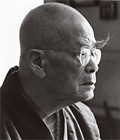
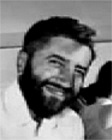
19651025_DTSuzuki_Phillips.pdf
Suzuki Daisetsu zenshu
(Complete Works of Suzuki Daisetzu).
Suzuki, Daisetz Teitaro.
Rev. ed. Tokyo: Iwanami Shoten. (1999)
A 40 Volume Collection.
Library of Congress Call No.
BQ988.U887 A2 1999
Volume 39, Page 390
A Letter From D.T. Suzuki to Dr. Bernard Phillips
October 25, 1965
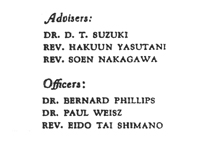
“I happen to notice my name among the ‘Advisors’ in the newly organized Zen Studies Society's letterhead. This is strange for I was never notified about the existence of the new Society, and am naturally surprised at finding myself listed with the two gentlemen, Yasutani and Nakagawa. / Will you please strike out my name at your earliest convenience and oblige,”
10/25/65
| Spanish Translation |
 |
Trabajos completos de Suzuki Daisetzu
Suzuki, Daisetz Teitaro
Edición revisada en Tokio, Iwanami Shoten. (1999)
Colección de 40 volúmenes
Registro en la Biblioteca del Congreso No. BQ988.U887 A2 1999
Tomo 39, p. 390
Carta de D.T. Suzuki al doctor Bernard Phillips
25 de octubre de 1965
“He notado que mi nombre aparece entre los “Consejeros” del membrete de la recién creada Sociedad de Estudios Zen. Me resulta extraño porque no fui notificado de la creación de esa nueva Sociedad y, naturalmente, me sorprende encontrarme entre caballeros como Yasutani y Nagakawa./ ¿Sería tan amable de hacerme el favor de remover mi nombre lo más pronto que le sea posible?/ Muy atentamente, / Daisetz T. Suzuki.”
Para ver el membrete, haga click aquí o aquí.
10/25/65
★
Handwritten Letter from Shimano to Robert Aitken.
"I need a Selective Service registration Card (Certificate?) for my citizenship. If I am correct, I remember that just after my arrival in Honolulu in 1960, you took me to the Selective service system near the library, (it is also near the post office I think) and I registered. I received a card(s), but I can not find it (or them). I may lost it.
It is now very important for me to have that card, or their statement that I did register. I need it very soon.”
(See fourteen entries since 12/24/64 concerning Aitken's request for a simple document for the INS confirming Shimano's transfer to another sponsor.)
10/25/65
| Spanish Translation |
 |
Carta Manuscrita de Shimano a Robert Aitken
“Necesito una tarjeta (¿o certificado?) de registro de Servicio Selectivo para mi ciudadanía.
Si no me equivoco, recuerdo que justo después de mi llegada a Honolulú en 1960 me llevaste al registro de Servicio Selectivo, cerca de la biblioteca (creo que también está cerca de la oficina de correos). Recibí una tarjeta (o varias), pero no las encuentro. Creo que las perdí.
Me es muy importante contar con esa tarjeta o con su declaración que avale mi registro. La necesito de inmediato.”
(Véanse, a partir del 24 de diciembre de 1964, 14 registros concernientes a la petición, que Robert Aitken formuló, de un simple documente para informar al SIN de la transferencia de Shimano a otro patrocinador.)
12/22/65
Suzuki Daisetsu zenshu
(Complete Works of Suzuki Daisetzu).
Suzuki, Daisetz Teitaro.
Rev. ed. Tokyo: Iwanami Shoten. (1999)
A 40 Volume Collection.
Library of Congress Call No.
BQ988.U887 A2 1999
Volume 39, Page 392
A Letter From D.T. Suzuki to Dr. Bernard Phillips
December 22, 1965
“I would like to repeat my request that my name be removed from the list of ‘Advisors.’ I do not wish to be associated in this special relationship. You have not, for one thing, notified me in any way whatsoever regarding your intention to have me connected with your ‘new’ Society. Please cancel my name immediately from the letterheads.”
12/22/65
| Spanish Translation |
 |
Trabajos completos de Suzuki Daisetzu
Suzuki, Daisetz Teitaro
Edición revisada en Tokio, Iwanami Shoten. (1999)
Colección de 40 volúmenes
Registro en la Biblioteca del Congreso No. BQ988.U887 A2 1999
Tomo 39, p. 392
Carta de D.T. Suzuki al doctor Bernard Phillips
22 de diciembre de 1965
“Quisiera insistir en mi petición de remover mi nombre de la lista de “Consejeros”. No deseo verme involucrado en esta relación especial. Para empezar, usted no me ha informado, en modo alguno, de su intención de relacionarme con esta “nueva” Sociedad. Por favor, sírvase eliminar de inmediato mi nombre de su membrete.”
08/00/66
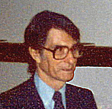
19660800_Busch_Friend.pdf
Letter from Sylvan Busch to "Dear Friend."
08/00/66
Announcement.
08/00/66
| Spanish Translation |
 |
Anuncio
08/19/66
Letter from Haku'un Yasutani and Shimano to "Dear Friend."
08/19/66
| Spanish Translation |
 |
Carta de Haku’un Yasutani y Shimano a “Estimado amigo”
02/26/68
New York Zendo Property Records for the Shobo-Ji Temple at 223 East 67th Street.
00/00/70
Zen Studies Society Brochure circa 1970.
“The Zen Studies Society’s two spiritual sponsors are Hakuun Tasutani Roshi and Soen Nakagawa Roshi, both Japanese Zen masters. Yasutani Roshi is best known in this country for his lectures in Three Pillars of Zen, complied aznd edited by Philip Kapleau. Soen Roshi (Tai-san’s teacher) is abbot of Ryutaku monastery in Japan, He first came to the United States some twenty years ago at the invitation of Nyogen Senzaki, and he returned several times since to spread the seeds of Buddhism in America.”
00/00/70
| Spanish Translation |
 |
Folleto de la Sociedad de Estudios Zen, alrededor de 1970
01/12/70
Public Record ZSS Townhouse - 356 East 69th Street, NYC, NY.
"THE ZEN STUDIES SOCIETY INC., a membership corporation..."
06/18/70
★
Handwritten Letter from Shimano to Robert Aitken.
06/18/70
| Spanish Translation |
 |
Carta manuscrita de Shimano a Robert Aitken
11/02/70
★
Letter from Robert Aitken to Shimano.
11/02/70
| Spanish Translation |
 |
Carta de Robert Aitken a Shimano
06/00/71
Sangha News Special Issue.
June 1971
“At last some 1400 acres and 'Beecher Lake' is legally the property of The Zen Studies Society, Inc. Plans are being drawn up by the Board of Directors for its use and development over an extended period of time, and it is hoped that eventually on this property a Zen Monastery will be built. To give opportunity for those who want to give, contributions towards the development of this historical project are welcomed.”
“The plans of construction regarding The International Dai Bosatsu Zendo are underway. If things are going well by the fall of 1972 we can use The Zendo for our sesshin. As the first deed of the property took place In 1776 and Uncle Tom's Cabin by Harriet Beecher Stow [sic] was written at this Beecher Lake. The Zen Studies Society wants to complete all construction by the spring of 1976 and on July 4th of that year, together with the 200 years anniversary of The United States of America, the dedication of The International Dai Bosatsu Zendo will take place. Tai-san, though he is the real founder, invited Soen Roshi to be the first Abbot. Soen Roshi accepted this but wants to honor Nyogen Senzaki's half a century work in America, so he will be the honorable first Abbot. His ashes will be burled in the sacred place near the lake.”
[ RED emphasis above added]
[Eido Shimano is in error claiming that "Uncle Tom's Cabin" was written at Beecher Lake, Hardenburgh, NY. "Uncle Tom's Cabin" was actually written in Brunswick, Maine, at the "Harriet Beecher Stowe House" – Also Known As – "Titcomb House" – The building is owned by Bowdoin College and located at 63 Federal Street, Brunswick, Maine.]

Evolution of a Landmark The Harriet Beecher Stowe House.pdf
06/00/71
| Spanish Translation |
 |
Número especial de novedades de la Sangha
“El primer sesshin de este verano comenzará el martes 27 de julio para concluir el martes 3 de agosto; el segundo, del domingo 29 de agosto al domingo 5 de septiembre. Ambos serán conducidos por Soen Roshi y Tai San en Litchfield, Connecticut… “
“La Sociedad de Estudios Zen es propietaria del Lago Beecher y de unos 1400 acres. La Junta de Directores se encuentra diseñando planes a largo plazo para su uso y desarrollo, con la intención de erigir en este lugar un Monasterio Zen. Se reciben donaciones para este histórico proyecto a fin de brindar oportunidad a quienes deseen dar.”
“Los planes para la construcción del Zendo Internacional Dai Botsatsu están en marcha. Si las cosas transcurren como se han planeado, en el otoño de 1972 lo podremos utilizar para nuestro sesshin; como la primera escritura de la propiedad data de 1776 y a orillas de Beecher Lake, Harriet Beecher Stowe escribió La Cabaña del Tío Tom, la Sociedad de Estudios Zen quisiera que para la primavera de 1976 esté concluida la construcción y que el 4 de julio, junto con el 200° aniversario de los Estados Unidos, se lleve a cabo la entrega del Zendo Internacional Dai Botsatsu. Aun cuando es su real fundador, Tai San quiso que Soen Roshi fuera el primer abad; éste aceptó, pero el abad honorífico será Nyogen Sensaki, a fin de honrar su medio siglo de trabajo en Estados Unidos. Sus cenizas serán depositadas en el sitio consagrado cercano al lago.
08/00/71
Sangha Newsletter August 1971.
“The New York Zendo Shobo-Ji will celebrate its THIRD ANNIVERSARY with a very special ceremony on September 15, 1971, at 6:00 p.m. At this time those students who have been with the Zendo for a considerable period of time with devotion and stability will be given their Dharma Name, which Soen Roshi and Tai-San will choose and write down artistically.”
“Just before the Roshi’s return to Japan, in order to establish a firm routine at the Dai-Bosatsu Zendo, we will have a five-day Zen Life In the mountains at the International Dal-Bosatsu Zendo In the Catskill Mountains. It is not exactly Sesshin as, in addition to Zazen, much work and joyous programs are Included.”
“Our Dharma Brother, Chuck Carpenter, who had been in Ryutakuji for more than a year, came back to New York on August 8th. Chuck will be in charge of the New York Zendo while the Roshi, Tai-San, and Hos-San are in California, and will then take charge of Dai-Bosatsu Zendo In the Catskills.”
08/00/71
| Spanish Translation |
 |
Boletín de la Sangha, Agosto de 1971
“El 5 de septiembre de 1971, a las 6 de la tarde, el Zendo de Nueva York Shobo-Ji celebrará su Tercer Aniversario con una ceremonia muy especial. En ese momento, aquellos estudiantes que hayan participado en el Zendo durante un tiempo considerable, y lo hayan hecho con devoción y estabilidad, recibirán su nombre Dharma, elegido por Soen Roshi y Tai San, quienes lo elegirán y anotarán artísticamente.“
“A fin de establecer una sólida rutina en el Zendo, justo antes de la partida del Roshi rumbo a Japón, tendremos una Vida Zen de cinco días en el Zendo Internacional Dai-Bosatsu, en las Montañas Catskill. En tanto que, aparte del zazen, hay mucho trabajo, así como jubilosas actividades, no es exactamente un sesshin;…”
“Nuestro hermano en el Dharma, Chuck Anderson, quien ha estado en Ryutakuji durante más de un año, regresó a Nueva York el 8 de agosto. Estará a cargo del Zendo de Nueva York mientras el Roshi, Tai San y Hos-san estén en California. Posteriormente se hará cargo del Zendo Dai-Bosatsu en las Castskills.”
10/00/71
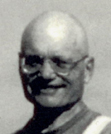
19711000_Sangha_Newsletter.pdf
Sangha Newsletter October 1971.
Daiko Charles Carpenter Ordination 09/05/71.
“Soen Roshi, Maxima Sensei and his assistant, Wako-san stayed with us, both in the New York Zendo Shobo-ji and in the Catskill Mountain International Dai Bosatsu Zendo for 99 days. During this time, Soen Roshi, together with Tai-san, Conducted two sesshins at Litchfield and the first historical sesshin at the Dai Bosatsu Zendo. Over 100 Sangha members participated. Maxim Sensei finished a huge painting for the Dai Bosatsu Zendo during his stay there. The painting is of The Buddha showing a flower to a large assembly and of his disciple Mahakasyapa gulling at this true teaching. In the painting, the assembly gathered around The Buddha Includes about 125 wonderful figures… monks, Bodhisattvas, Arahats, Christians, heavenly beings, children, American Zen figures, and many animals, as well as Manjusri and Fugen Bodhisattva, who are at The Buddha's sides.”
“This truly wonderful painting is like a symphony, as Soen Roshi said, and will be considered as one of the masterpieces of this century. Alan Schier made a big wooden frame for the painting. We held the farewell party for Roshi, Maxima Sensel and Wako-san on September 19th In the New York Zendo. The next day Soen Roshi departed for Jerusalem and Maxim Sensei and Waku-san returned to Japan.”
“During his stay, Tai-san asked Soen Roshi to become the Abbot of the Dai Bosatsu Zendo and he accepted, Nyogen Senzaki Roshi will be the Honorary First Abbot. Soen Roshi again asked Tai-san to accept the title of Roshi, but Tai-san wishes still to postpone accepting it. The Roshi name that Soen Roshi selected for Tai-san is ‘Mui-shltsu,’ which is from The Rlnzai Roku.... ‘True Man Without Rank.’ "
“On September 15th, Soen Roshi and Tai-san led the ceremony to celebrate the 3rd anniversary of the New York Zendo in the 67th Street building. The occasion was especially marked by the ordination of the first New York Sangha American monk, ‘Reizan Dai-KO’ (Chuck Carpenter). As a monk, Chuck is now to be called Dai-KO. Dai-KO means Dharma Carpenter" and Reizan means ‘Spiritual Mountain’.”
“On September 5th, the historical first sesshin was begun at the Dai Bosatsu Zendo, lasting for five days and attended by 23 members, including one student of Nyogen Senzaki Roshi, who flew from California to be with us. A little different that usual, this sesshin was a Samu-work-sesshin, combining periods of hard work with periods of Zazen. It was very successful to help in establishing traditions and Zen spirit at Dai Bosatsu Zendo and in accomplishing some major work jobs that needed to be done. In residence at the Dai Bosatsu Zendo now are Dai-KO (Chuck) as Resident Director, Mal-Shin (Mike Sopko) as Resident Assistant Director, and Myo-KO (Carol Snyder) as Secretary and Cook. Dai-Shin (Steve Levine) who is now a resident In the New York Zendo, has been asked to Join then soon. Basically, the schedule and rules of the New York Zendo and the Dai Bosatsu Zendo are the same, as they are twin brother Zendos, but since the Dai Bosatsu Zendo is in the seclusion of the mountains, there are few outside distractions, so it is a little more monastic. The New York Zendo is a place where people of the city may practice Zazen together, and it is also a kind of entrance place, In many ways, for people who are new to Zen or to its practice in New York. The International Dai Bosatsu Zendo will be the training center for these same people who wish to make the practice of Zen a permanent and deeper part of their lives. At present, every week-end, about seven to ten people can visit the Dai Bosatsu Zendo, participating in the schedule of Zazen, work study, and free rest time. On the second week-end of each month, members can attend with their children. On the third week-end of each month, due to the monthly week-end sesshin In the New York Zendo, the Dai Bosatsu Zendo will be closed. It is now being planned that from November on, some students may arrange to stay In the Dai Bosatsu Zendo for a period of one week or more Intensive practice, with Tai-san’s approval.”
“As the director of the Dai Bosatsu Zendo, Tai-san deeply wishes to develop the Dai Bosatsu Zendo slowly and with a well rooted foundation. So, at this point, only a limited number of students will be able to go there. After two or three years of gradual growth, there will be a need for larger facilities to accommodate both New York Zendo Sangha and students from other Zen groups. The architectural plans and financial provisions for these developments are now being carefully studied by The Board of Directors of The Zen Studies Society, Inc.”
10/00/71
| Spanish Translation |
 |
Boletín de la Sangha
“Soen Roshi, Maxima Sensei y el ayudante de éste, Wako-San, estuvieron con nosotros durante 99 días, tanto en el Zendo Shobo-Ji de Nueva York, como en el Zendo Internacional Dai Bosatsu de las Montañas Catskill. En este lapso, Soen Roshi y Tai San condujeron dos sesshines en Litchfield y el histórico primer sesshin en el Zendo Dai-Bosatsu. Participaron más de 100 miembros de la Sangha . Durante su estancia, Maxima Sensei finalizó la pintura de un enorme cuadro para el Zendo Dai Bosatsu que representa al Buda al momento de mostrar una flor a una asamblea y sonreír a su discípulo Mahakashiapa ante esta genuina enseñanza. El cuadro muestra a 125 maravillosas figuras: monjes, Arhats, Bodhisattvas, cristianos, seres celestiales, niños, figuras del Zen norteamericano, así como los Bodhisattvas Manjusri y Fugen, que pueden observarse a los lados del Buda.“
“Esta maravillosa pintura parece una sinfonía, como lo dijo Soen Roshi, y será considerada una de las piezas maestras de este siglo. Alan Schmer construyó el enorme marco de madera para esta pintura. El 19 de septiembre dimos una fiesta para despedir a Soen Roshi, Maxima Sensei y Wako-San en el Zendo de Nueva York. Al día siguiente, Soen Roshi partió rumbo a Jerusalén y Máxima Sensei, junto con Wako-San, a Japón.”
“Durante la estadía de Soen Roshi, Tai San le pidió que fuese el primer abad del Zendo Dai Bosatsu, a lo que accedió. Nyogen Senzakai Roshi será el Primer Abad Honorario. Soen Roshi pidió a Tai San, de nueva cuenta, que aceptase el título de Roshi, lo que éste desea posponer. El nombre de Roshi para Tai San, elegido por Soen Roshi, es “Mui-Shitsu”; proviene del Rinzai Roku [y significa] “Hombre veraz sin rango”.”
“El histórico primer sesshin en el Zendo Dai-Bosatsu dio inicio el 5 de septiembre; duró 5 días y se contó con 23 participantes, uno de los cuales, discípulo de Nyogen Senzakai Roshi, voló desde California para asistir. Fue éste un sesshin Samu (de trabajo), un tanto distinto a los demás, en el que se intercalaron períodos de arduo trabajo con los de Zazen. En tanto que se establecieron tradiciones, así como el espíritu Zen del Zendo y fueron concluidos necesarios trabajos de importancia, fue todo un éxito.Residentes en el Zendo Dai Bosatsu están Dai-ko (Chuck) como Director, Mai-Shin (Mike Sopko) como Director Auxiliar y Myo-ko (Carol Snyder) como Secretaria y Cocinera. Dai Shinm (Steve Levine), quien es Residente en el Zendo de Nueva York, ha solicitado su inclusión. Fundamentalmente, los Zendos de Nueva York y el Dai Bosatsu se rigen con los mismos horarios y reglas, pero ya que el último se encuentra en la reclusión de las montañas y hay pocas distracciones, es más monástico. El de Nueva York es un Zendo al que acuden los residentes de la ciudad con la finalidad de practicar juntos el Zazen y también un lugar al que llegan quienes son nuevos en el Zen o a su práctica en Nueva York. El Zendo Internacional Dai Bosatsu será el centro de entrenamiento para quienes, de entre esa misma gente, deseen convertir su práctica en un segmento permanente y profundo de su vida. Actualmente, todos los fines de semana un grupo de entre siete y diez integrantes puede visitar el Zendo Dai Bosatsu y participar en el horario de Zazen, estudio de trabajos y tiempo de descanso. Los miembros pueden asistir acompañados por sus hijos el segundo fin de semana del mes y el tercero permanece cerrado por las actividades del sesshin mensual de dos días que se realiza en el de Nueva York. Se está planeando que a partir de noviembre algunos estudiantes puedan permanecer en el Dai Bosatsu para un período de práctica intensiva durante una semana o más, con la autorización de Tai San.Como Director del Zendo Dai Bosatsu, Tai San desea que su desarrollo se lleve a cabo lentamente y cuente con una firme base. Por ello, en este momento sólo se permitirá que un número limitado de estudiantes vaya para allá y tras dos o tres años de crecimiento gradual serán necesarias mayores instalaciones para alojar tanto a la Sangha de Nueva York como a otros grupos Zen. Los planes arquitectónicos y las provisiones financieras son analizados cuidadosamente por la Mesa de Directores de la Sociedad de Estudios Zen, Inc.”
12/17/71
Zen Studies Society Appeal Letter.
Note that in 1971; Ryutaku-Ji Monastery in Mishima, Japan, is referred to as "our parent monastery in Japan."
“The year just ending marks the end of a seven-year cycle of great achievement for the Sho Bo Ji. This period saw the establishment on a firm base of the Sho Bo Ji itself; the setting up of an exchange program of students from the Sho Bo Ji and monks from Ryutaku Ji, our parent monastery in Japan. This exchange has already brought us the inestimable benefit of the presence here of Rin San and Ho San, and helped produce Sho Bo Ji’s first American-born monk, Dai KO (Chuck Carpenter). Of equal importance was the founding of the International Dai Bosatsu Zendo at Beecher Lake, that secluded spiritual site which most of us have by now visited. Already the strength of our Sangha helps support Dai Bosatsu spiritually in the day-today quality of its life; but with the beginning of this new cycle we must consider plans for its further physical development. Long-range proposals call for, among other things, the construction of sesshin facilities for us all - a zendo, dormitories and a kitchen.”
“The acquisition of the property and buildings of the Sho Bo Ji and Dai Bosatsu was made possible, in large part, by extraordinary gifts provided especially for that purpose. The responsibility for providing funds for their continuing maintenance and expansion and for the exchange program now rests with us, the Sangha of the Sho Bo Ji. As with everything else these days, to fulfill that responsibility will require more funds, and we, the keepers of Sho Bo Ji's treasury, must report that, indeed, the storehouse is near empty.”
12/17/71
| Spanish Translation |
 |
Apelación de la SEZ
Nótese que en 1971, el Monasterio Ryutaju-ji, de Mishima, Japón, es considerado como “nuestro monasterio matriz en el Japón”.
“El que termina marca el fin de un ciclo de 7 años para el Sho Bo Ji en el que hubo grandes logros. Se vio un firme crecimiento del Zendo y la implementación de un programa estudiantil de intercambio con Ryutakuji, nuestro monasterio matriz en el Japón. Este intercambio ya nos proporcionó el inestimable beneficio de la presencia de Rin San y Ho San y nos brindó la oportunidad de contribuir con el primer monje nacido en Norteamèrica, Dai Ko (Chuck Carpenter). De idéntica importancia fue la fundación del Zendo Internacional Dai Bosatsu en el Lago Beecher, aislado sitio espiritual que casi todos hemos visitado. La calidad de la vida cotidiana en el Dai Bosatsu ya se ve fortalecida espiritualmente por el brío de nuestra Sangha; sin embargo, con el principio de este nuevo ciclo se percibe la necesidad de un mayor desarrollo material. Las propuestas de largo plazo piden, entre otras cosas, la construcción de instalaciones para sesshin (Zendo, dormitorios y cocina) para todos nosotros.”
“En gran medida, la adquisición de los terrenos y de los edificios para ambos Zendos fue posible por donaciones especialmente realizadas para ello. Pero es en nosotros, la Sangha Sho Bo Ji donde reside ahora la responsabilidad para el mantenimiento cotidiano de ellos, su expansión y el programa de intercambio. Como sucede actualmente con todo lo demás, es necesario contar con fondos para hacer frente a tal responsabilidad y nosotros, los cuidadores de la tesorería de Sho Bo Ji, tener el deber de informar que las arcas están casi vacías.”
01/01/72
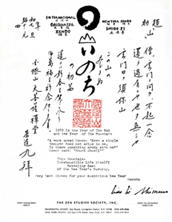
19720101_ZSS_New_Years.pdf
Zen Studies Society New Year's Ōfuda, (御札) for 1972.
Note that in 1972; Soen Nakagawa, Roshi is referred to as ZSS Abbot.
"1972 is the Year of The Rat and the Year of The Mountain"
"Very Best Wishes for your Auspicious New Year"
"Soen Nakagawa – Abbot"
"Eido Tai Shimano – Director"
06/08/72
Zen Studies Society NYZ Kitchen Appeal Letter.
"When the Sho Bo Ji was planned, the phenomenal growth of the Sangha in the last few years was not anticipated. The third floor of the building was designed as an apartment for Tai-San and Yasuko, and its kitchen was adequate for their needs. However, the Sangha's growing need for space obliged them to find other quarters, and the family-sized kitchen was pressed into service as the preparation area for eight meals each sesshin for up to fifty or sixty people. But in the present space there is no room in icebox and cupboards to store the piles of raw materials needed for the sesshin meals; and the stove and sink are hopelessly inadequate for 'institutional' cooking; work space doesn't exist. Intimidated by the great heat in that area both in Summer and Winter; frightened by the immense cauldrons of soup balanced precariously on ledges ; irritated by the constant jostling of other bodies in the cramped space , many volunteer cooks and assistant cooks came one time but were so discouraged by conditions there that they rarely volunteered again. This has meant that month after month two or three people again and again assume the formidable task of providing our food, but it is unfair to expect, or even to permit, them to continue this indefinitely. In a new and workable kitchen it will be possible for many brothers and sisters to experience cooking zazen."
"So this crisis arises. There is no question that the kitchen must be replaced. If you have not been in the third-floor kitchen, please ask to be taken up there. You will immediately see the urgency of the matter. And, because of sky-rocketing costs caused by ever -continuing inflation, it must be done at once. An architect has already been consulted, preliminary drawings have been made, and estimates from two contractors have been. obtained. To redesign and enlarge the present area to the minimum kitchen which will serve the Sangha s needs, including the necessary storage receptacles, cabinets, heavy -duty stoves and refrigerators , will cost approximately nine thousand dollars; the architect's fee will be an added ten percent of the total sum. By the Sangha's doing a certain amount of the demolition work, carrying appliances up the two long flights of stairs, etc. , it is estimated that this total may be reduced by five percent. Because of the need to draw up final plans, Soen Roshi’s arrival, the two late Summer sesshins, and because tine is necessary to raise money for this project, it has been decided to aim at early October of this year as the beginning date for construction. This means that money for payment of contractors, suppliers, and architect, must be in hand by the first of October. With something added for contingencies, this means $10,000.00 must be raised by us in the next four months."
06/08/72
| Spanish Translation |
 |
Zendo de Nueva York de la Sociedad de Estudios Zen – Carta de Petición para la cocina
“Cuando se planeó el Sho Bo Ji no se tuvo en cuenta el crecimiento fenomenal de la Sangha en estos años. El tercer piso del edificio fue destinado a las habitaciones de Tai San y Yasuko, con una cocina adecuada a sus necesidades, pero, al requerirse más espacio para la Sangha, tuvieron que buscar otro alojamiento. Cada sesshin, la cocina, diseñada para necesidades familiares, fue habilitada como área de preparación de 8 comidas hasta para 50 ó 60 personas. Pero en el espacio actual no hay lugar en el refrigerador ni en las alacenas para la materia prima necesaria para los sesshines; la estufa y el fregadero son insuficientes para la cocina 'institucional' y no existen espacios para trabajar. Muchos cocineros y asistentes de cocina voluntarios difícilmente volvieron a ofrecerse por las condiciones que encontraron: el agobiante calor, tanto en verano como en invierno, los intimidó; el precario equilibrio que las ollas para sopa tenían en los anaqueles los asustó y quedaron irritados por los constantes empujones que recibían de otros cuerpos en los reducidos espacios. Esto ha conducido a que, mes tras mes, dos o tres personas asuman la formidable tarea de preparar las comidas, pero es injusto esperar -¡o permitir!- que lo hagan indefinidamente. Una nueva cocina, en la que sea posible trabajar, permitirá que nuestros hermanos puedan experimentar el zazen del cocinar.”
“Por ello, nos encontramos en una crisis: no hay duda de la necesidad de cambiar de cocina. Si no has ido al tercer piso, pide que te lleven y verás de inmediato la urgencia del asunto. Y a causa del aumento vertiginoso de los precios, nacido de una inflación galopante, debe emprenderse de inmediato. Ya fue consultado un arquitecto; contamos con planos preliminares y hay presupuestos de dos contratistas. Se necesitan, aproximadamente, nueve mil dólares para rediseñar y ampliar la cocina actual a un tamaño que permita cubrir las necesidades de la Sangha. Se incluyen los recipientes necesarios para almacenamiento y gabinetes, así como refrigeradores y estufas para trabajo pesado. Los honorarios del arquitecto ascienden al 10% del total, el que puede reducirse en un 5% por el trabajo de la Sangha en parte de la demolición y en la transporte de los aparatos hasta el tercer piso. Debido a la necesidad de realizar planos definitivos, a la llegada de Soen Roshi, a los dos sesshines de finales del verano y a la de recaudar los fondos necesarios para el proyecto, se tiene el propósito de dar inicio a la construcción a principios de octubre, lo que implica que el 1 de octubre ya contemos con el dinero para cubrir el pago de contratistas, proveedores y del arquitecto. Esto significa que, con algo para contingencias, en los siguientes cuatro meses debemos recaudar diez mil dólares.”
09/01/72
Invitation From Eido Shimano.
“The President and The Board of Directors of The Zen Studies Society, Inc, cordially invite you to be present at the following two ceremonies:”
“Dai Bosatsu Zendo Jichinsai”
“New York Zendo Shobo ji – Opening Anniversary Ceremony”
“For the sake of American Buddha Dharma we hope that you can be with us on both occasions.”
09/15/72
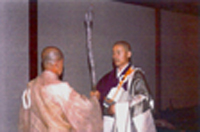
19720915_SoenShimanoDt.pdf
ZSS Announcement of Dharma Transmission.
PRIOR TO THAT. ON SEPTEMBER THE 13th IN A FORMAL CEREMONY AT DAI BOSATSU ZENDO. SOEN ROSHI (中川 宋淵) BECAME THE HONORARY FOUNDER OF DAI BOSATSU ZENDO AT THE CATSKILL MOUNTAINS. ALSO THE LAND PURIFICATION AND CHRISTENING CEREMONY FOR THE FUTURE ZENDO BUILDING SITE WAS PERFORMED."
[See entry of: 05/15/11]
09/15/72
| Spanish Translation |
 |
La Sociedad de Estudios Zen anuncia Transmisión del Dharma
“NOS COMPLACE ANUNCIARLES QUE EL 15 DE SEPTIEMBRE DE 1972, EN EL ZENDO SHO BO JI DE NUEVA YORK, SE LLEVÓ A CABO LA CEREMONIA DE TRANSMISIÓN FORMAL DEL DHARMA DE MITTA-KUTSU NAKAGAWA SOEN ROSHI (中川 宋淵) A SU HEREDERO DHARMA, MUI-SHITSU SHIMANO EIDO ROSHI (中川 宋淵) . AL MISMO TIEMPO, SOEN ROSHI (中川 宋淵) INSTALÓ A EIDO ROSHI (中川 宋淵) COMO ABAD DE LOS ZENDOS SHO BO JI DE NUEVA YORK Y DEL DAI BUTSU.
CON ANTERIORIDAD, EL 13 DE SEPTIEMBRE, EN UNA CEREMONIA FORMAL CELEBRADA EN EL ZENDO DAI BUTSU DE LAS MONTAÑAS CATSKILL, SOEN ROSHI (中川 宋淵) SE CONVIRTIÓ EN SU FUNDADOR HONORARIO. TAMBIÉN FUERON REALIZADAS LAS CEREMONIAS DE PURIFICACIÓN DE LA TIERRA Y DE BAUTIZO CRISTIANO PARA EL FUTURO EDIFICIO DEL ZENDO.
08/01/74
The Zen Studies Society
Financial Picture
(As of August 1, 1974)
"From most recent estimates received for completing the exterior and interior of the buildings of International Dai Bosatsu Zendo, it is clear that we need $900,000 more. Enclosed is an outline of the expenses of the 'Minimum Project' as of August 1, 1974."
"At present, we have $400,000 as our building fund, which means that we are $500,000 short. Even if inflation does not increase, we will need at least that much. Our Zendo is now half-completed--at this point it can neither be used nor abandoned. This is our dilemma. One possibility is to dip into our limited endowment fund. But were we to do this, if we did not raise the $500,000 by the time the buildings were completed, we would be absolutely penniless-unable to pay any operating expenses, now estimated at $70,000 annually. Eventually, through the monies realized through monthly sesshins, Logging operations, and other projects, we will be self-supporting; but it will take at least 10 years to achieve this situation."
09/26/74

19740926_Liberty_News.pdf
Liberty Evening News
250 Attend Dai Bosatsu Day Ceremonies at Zen Monastery
“Rev. Shimano welcomed everyone and said that he had decided after thinking over the title of his talk, that perhaps instead of speaking of what Zen Buddhism is, he should speak of what America is, so that Zen in America may be better understood.”
“ ‘There are five points which make up America’, he began, ‘and some of you may agree and some of you may disagree, but permit me to tell you what I feel America is.’ ”
“ ‘First, America is democratic, then pragmatic, individualistic, and perhaps materialistic, and finally, very optimistic. This is what I think America is,’ he said.”
“ ‘And democracy I believe is the root of equality; everyone is equal, black or white… young or old… etc. In Zen Buddhism, one of the most essential points is that all beings, all of us, are equal… of an equal nature, and that is very democratic. Zen is democracy; there is not discrimination.’ ”
“ ‘We have many people in the world toady,’ concluded Rev. Shimano, ‘but we do not have enough men to guide. So this place, the International Dai Bosatsu Zendo, is, in a way, a training center, in which to produce a wonderful human being.’ ”
10/21/74
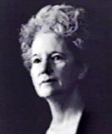
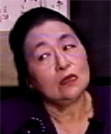
19741021_Carlson_Aiho.pdf
Letter from Dorris Carlson to Yasuko Shimano.
"It is only because of the spiritual stature of Eido Roshi (嶋野 栄道) that I gave any funds to the Zen Studies Society."
Dorris Carlson was the wife of Chester F. Carlson, the inventor of xerography.
(See letter of 02/08/84)
00/00/75
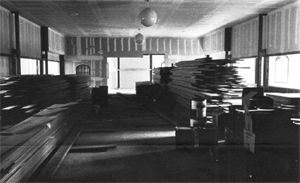
19750000_DBZ_Construction.pdf
Zen Studies Society DBZ Construction Appeal.
“The exterior of International Dai Bosatsu Zendo was completed during this past winter of 1974-75. When construction was suspended in January, the plumbing, electricity, and heating systems were all in operation.
During the spring of 1975, the construction of the interior was resumed. The Tasmanian Oak flooring (having become acclimated to the new building) was laid. The interior and exterior doors were hung, the kitchen was installed, and the painting of the interior was begun.
This work continued until July of 1975. Construction has now been discontinued and will not be resumed until further funds are made available.
All of the funds of the Society (as of July 1st, 1975) have been provided by the members here in the United States, with one exception. A recent donation was made by the president of a leading financial institution in Japan for the construction of a bell and bell tower. Although nearly $3,000,000 has been spent in the development of International Dai Bosatsu Zendo, at the very last it cannot be used.
$75,000 must be raised in order to finance construction that would make the monastery functional this summer. With this money the floors could be sanded and finished, a second coat of paint applied, minimal furnishings could be purchased, the entrance road could be surfaced, and a fire-fighting system could be constructed.
Ultimately, another $175,000 must be raised in order to finance the work of the Japanese craftsmen who will finish the interior of the Zendo, Dharma Hall, Tea Room, library and meeting room in the traditional Japanese manner.
But if $75,000 is raised, the monastery will be lived in, even in its unfinished form, and will provide rooms for as many as 50 sesshin attendants. In whatever stage of completion, the International Dai Bosatsu Zendo will be formally dedicated in a ceremony to be held on America's Bicentennial, July 4th, 1976.”
“SHARE YOUR TAX REBATE WITH DAI BOSATSU
A donation of any size can immediately be used to furnish the interior of International Dai Bosatsu Zendo. The walls can wait for the second coat of paint and the Japanese wood trim, but the Zendo cannot be without cushions. Your tax rebate might pay for the materials used to make one cushion – all the labor is being donated by visitors this summer. Or your check may pay for one tatami mat, or furnish one bedroom.”
08/24/75
New York Times Article
Buddhist Center Rises in Catskills
by Luisa Kreisberg
" 'The New York zendo functions as an entrance gate' says Eido Shimano Roshi, the society's 42-year-old spiritual leader."
09/00/75
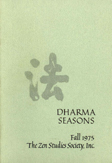
19750900_Fall_DS.pdf
Dharma Seasons
ZSS News Letter
Fall 1975.
“PUBLICATION ANNOUNCEMENT
Namu Dai Bosa
A TRANSMISSION OF ZEN TO AMERICA
by Nyogen Senzaki, Nakagawa Soen, and Shimano Eido
Edited and with an Introduction by Louis Nordstrorn
Preface by Ruth Lilienthal
Namu Dai Bosa will appear in a limited edition on July 4, 1976, to mark the formal opening and dedication of International Dai Bosatsu Zendo Kongo Ji. Trade and paperback editions will follow shortly thereafter. The book is divided into three parts. The first contains talks and poems by Nyogen Senzaki; the second is composed of teishos by Nakagawa Soen Roshi, transcribed during recent sesshins held at Dai Bosatsu Zendo. The third, written by Shimano Eido Roshi and called 'The Way to Dai Bosatsu,' is an account of his own Zen training in Japan, his experiences in the United States with the development of Zen practice there, and the establishment of Dai Bosatsu Zendo. Namu Dai Bosa will be published by Theatre Arts, under the direction of Jochi George Zournas. (The book will be part of Theatre Arts Bhaisajaguru Series, which includes Peonies Kana.)”
“It is still hard to believe that we are actually living and practicing in the new monastery. Walking across the courtyard platform from dining room to Dharma Hall and feeling rather than seeing the upturned roof, the bell shaped windows, the long cool space of the Zendo, one is not quite sure what country, what century, what lifetime one is in.”
“ The Roshi said, 'This floor has finally been laid. Now we must sit with all our might-we must be the nails and screws.' Eido Roshi's teishos at that sesshin and throughout the summer have been on the Hekigan Roku. On July 4, 1975, when he 'took the high seat' for the first time in the new Zendo, he began: ‘At last a baby is born. . .’ but he could not continue.”
“The arrival of our own huge gong, contributed by Mr. Kiichiro Kitaura, President of Nornura Securities in Japan, is expected soon. There had been great concern over the lack of funds for a bell tower from which to hang this gong. This summer, however, Eido Roshi received a telephone call from Mr. Kitaura during which he generously offered to provide the money for the tower as well. The site of the bell tower has been chosen and surveyed, and construction will begin soon.”
“Upon approving our requests to enter the monastery, Eido Roshi told us which rooms would be ours, and we then went to our new quarters and sat in Zazen until niwazume for everyone had ended. That afternoon, after moving our belongings, we engaged in sumo (wrestling) matches, followed by a trip to Rudi's Big Indian, where we had a celebration feast.”
“The entire monastery, including the Zendo, kitchen, offices, dining room, and laundry, was in full operation on August 8. At 8 P.M. on the eighth day of the eighth month (the number 8 is called suehiro and means 'ever-expanding future') a formal dedication ceremony took place in the new Zendo. The next day, nearly 100 Sangha members and Dharma friends gathered at noon in the monastery courtyard for a dedication ceremony. As he did three years earlier, when the ground was first broken at the site, Eido Roshi made an invocation to the dieties of Dai Bosatsu Mountain, expressing the Sangha's gratitude. Following the ceremony, we celebrated with a grand feast prepared by Aiho and several students.”
“Soen Roshi gave teishos daily on the Rinzai Roku. Eido Roshi gave dokusan. On the evening of August 30, Eido Roshi spoke of how privileged we were to have Soen Roshi with us and to be participating in this first seven-day sesshin in the new monastery. Although he and Soen Roshi have Rinzai Zen backgrounds, he said, here in this new Zendo on this new continent we will establish neither Rinzai nor Soto Zen, but Dai Bosatsu Zen.”
“As the physical construction of the monastery nears completion, an American lay monastic system is developing as well. While in essential areas, the centuries-old traditions of Japanese Rinzai Zen will be maintained, certain aspects of living and practicing at Dai Bosatsu Zendo will become clear only as the monastic community develops.”
00/00/76
Excerpts from Namu Dai Bosa by Senzaki, Nakagawa, Shimano Concerning Supporters.
01/09/76
★
Letter from Shimano to Robert Aitken.
We would be greatly honored if you and one or two of your students could be present for this rare occasion. I believe that the transmission of Buddha-Dharma will be greatly aided by our togetherness. If your schedule does not allow you to be away for such an extended period of time, we hope that you may participate in at least the opening ceremony of July 4th. However, please note that your students are welcome to attend the Sesshin even in your absence."
01/09/76
★
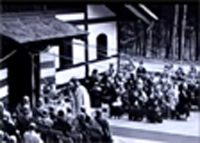
19760109_DBZ_Opening_Ceremony.pdf
Dai Bosatsu Zendo Opening Brochure.
02/10/76
★
Letter from Robert Aitken to Shimano.
I have considered this matter together with Anne and with other members of our sangha, and decided to arrange matters so that I can accept. It is an important event, and I am looking forward to participating.
I will take part in both the sesshin and the opening ceremonies, and will come to Shoboji on June 26 to accept your generous offer of overnight accomodations and transportation on the 27th to Kongo-ji, I will be accompanied by two students, Lucile Jenkins and Nelson Foster, Lucile may go directly to Kongo-ji on the 27th. as she has relatives in upstate New York who can drive her. This is not settled yet, and she will let you know. Nelson will meet us at Shoboji and stay overnight on the 26th."
VIDEO
10/10/76
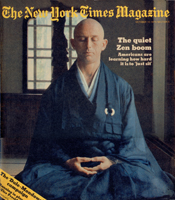
19761010_NYT_DBZ.pdf
New York Times Magazine
The quiet Zen boom: Americans are learning how hard it is to ‘just sit’
By Lawrence Shainberg
“The violence of ‘just sitting’ “
“Buddha himself predicted Zen’s movement from East to West – but not the speed of its growth in America. At a new $3-million monastery in the Catskills, a visitor finds his psyche under assault.”
00/00/78
Zen Studies Society Brochure circa 1978.
“Since the founding of The Zen Studies Society, Inc., in 1956, the practice of Zazen in the Eastern United States has grown rapidly, first through the efforts of Dr. D. T. Suzuki, who made a large body of Zen literature available to Westerners, and then through the strong guidance of two Zen Masters, Soen Nakagawa Roshi and Eido Tai Shimano Roshi.”
“The Zen Studies Society, Inc. is an umbrella organization for two Zendos: the New York Zendo, called Shobo Ji, ‘The Temple of True Dharma,’ located at 223 East 67 Street; and the International Dai Bosatsu (Great Bodhisattva) Zendo, located on a beautiful 1400-acre tract of land high in the Catskill Mountains. On this site an authentic Zen monastery is now being constructed. July 4, 1976 is the projected date for the opening of the monastery, which will serve as a spiritual training center for students from all over the world.”
"In 1960, after many years of intensive practice at Ryutaku Ji temple in Japan, Eido Tai Shimano was asked by his teacher Soen Roshi to come to America. For the first four years, he led a Zen group in Hawaii. On January 1, 1965, he came to New York, and during the next few years, he met with a small group of New York students. During this time he continued his own practice under the guidance of both Soen Roshi and the late Hakuun Yasutani Roshi. On September 15, 1968, the New York Zendo Shobo Ji was formally opened. Eido Roshi received the transmission of the Dharma from Soen Roshi at a memorable ceremony on September 15, 1972 at which time he was given the name Mui Shitsu, ‘True Man without Rank,’ and was formally installed as Abbot of both New York Zendo and the International Dai Bosatsu Zendo.”
“Soen Roshi retired from his position as Abbot of Ryutaku Ji in 1973, in order to be able to participate more fully in the completion of International Dai Bosatsu Zendo.”
[Regarding the statement: “Eido Tai Shimano was asked by his teacher Soen Roshi to come to America.” See the following entries:
and
01/25/78

19780125_FortScotTribune.pdf
New York Town Hurt by too Much Tax Exempt Land.
Fort Scott, Kansas Tribune.
" ‘Welcome to Hardenbugh.’ reads the road sign marking the boundary of this rural town. Scrawled underneath those words or others that tell the story: ‘Tax exemptions granted.’ "
"In the past several years, the 236 adult inhabitants, whose income averages among the lowest in New York State at under $7,000 a year, have acquired some unusual neighbors with one thing in common - most of them pay little or no property tax. "
"The entire town consisting or 54,000 acres is valued at $20 million for tax purposes. Here is who owns much of that land, virtually tax free:"
"- The Zen Studies Society, Inc., owns 977 acres worth $2.3 million. "
| The "What's New?" Page: Latest Additions | 日本語はここをクリックしてください: |  |
| Deutsch, bitte klicken Sie hier:_ |  |
|
| Was ist neu? Seite | ||
| End of page 5 | ||
| Page 1 | Page 2 | Page 3 | Page 4 | Page 5 | Page 6 | Page 7 | Page 8 | Page 9 | Page 10 |
| 1 - 50 | 51 - 100 | 101 - 150 | 151 - 200 | 201 - 250 | 251 - 300 | 301 - 350 | 351 - 400 | 401 - 450 | 451 - 500 |
| 1958-1964 | 1964-1964 | 1964-1965 | 1965-1965 | 1965-1978 | 1978-1982 | 1982-1983 | 1983-1986 | 1986-1993 | 1993-1995 |
| Page 11 | Page 12 | Page 13 | Page 14 | Page 15 | Page 16 | Page 17 | Page 18 | Page 19 | Page 20 |
| 501 - 550 | 551 - 600 | 601 - 650 | 651 - 700 | 701 - 750 | 751 - 800 | 801 - 850 | 851 - 900 | 901 - 950 | 951 - 1000 |
| 2009-2010 | 2010-2011 | 2011-2011 | 2011-2011 | 2011-2011 | 2011-2012 | 2012-2013 | 2013-2013 | 2013-2013 | 2013-2014 |
| Page 21 | ||
| 1001 - 1050 | ||
| 2014-2015 |
 |
 |
 |
 |

